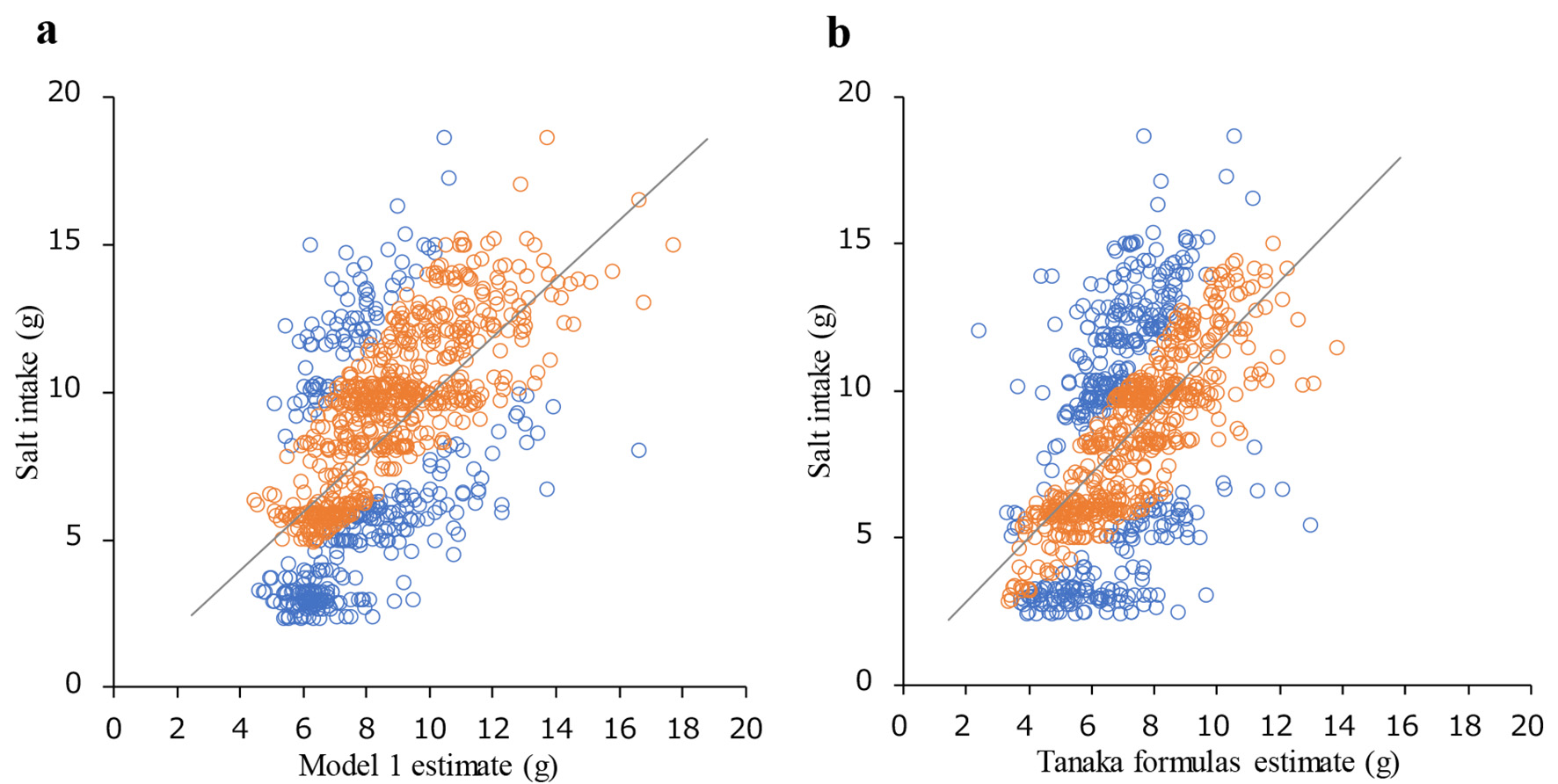
Figure 1. Relationship between measured and estimated previous day’s salt intake. (a) Relationship between salt intake estimated by model 1 and actual salt intake. (b) Relationship between salt intake estimated by Tanaka formulas and actual salt intake. Blue plot: relative difference > 30%, orange plot: relative difference ≤ 30%. The percentages of relative difference ≤ 30% for model 1 and Tanaka formulas were 64.2% and 58.4%, respectively. The percentages of absolute difference ≤ 1 g for model 1 and Tanaka formulas were 25.0% and 25.6%, respectively.